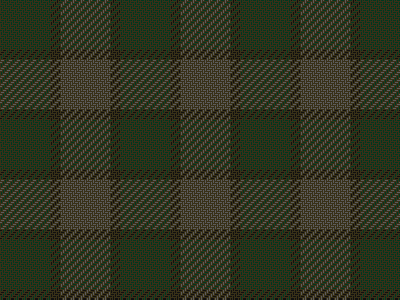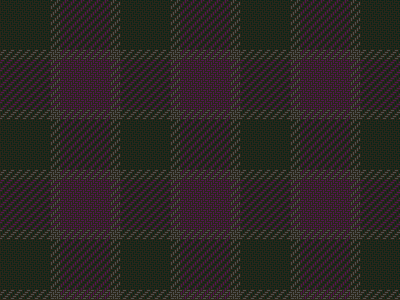
Wool has been gathered in Wotanberg virtually forever from wild goats whose descendents can still be found in the Grand Duchy's rugged mountains. When Scottish soldiers came to the Grand Duchy in 1814, they were indeed surprised to find Wotanbergers attired in "tartans" rivalling those in Scotland. These three examples survive:

This pattern was produced in the Weselbach valley. Variations remain the official tartans of the cities of Trevorstein and Weselbach.

This pattern was produced in the Drachenthal ("Dragon Valley"). Variations remain the official tartans of the town of Drachenhagschmied ("Dragon's fence smithy") and Drachenhagwarte ("Dragon's fence watchtower"), a sister school of the now-famous Hogwarts in the United Kingdom.

This is an early version of the von Weselstein family--the nation's Grand Ducal Family.
With the introduction of British breeds of sheep in the early 1820's, sheep-raising and its related industries--spinning, weaving, and knitting--became a major factor in the nation's economy. Today, sheep--and the industries they support--remain an important source of national identity and pride, not to mention two of most nation's most popular dishes--Hammelzungen in Gurkensosse (sheep's tongue in cucumber sauce) and haggis (assorted sheep parts and oatmeal cooked in a sheep's stomach).
Additional information can be obtained by contacting the following organizations or firms: